Spring is the perfect time to plant perennial plants that will reward you with vibrant growth and blooms year after year. These plants establish strong roots and thrive with minimal effort once they’re in the ground.
From colorful echinacea to hardy hostas, the 23 perennial plants featured in this list are ideal for adding long-lasting beauty to your garden. Whether you’re looking to brighten up your landscape with seasonal colors or create a low-maintenance garden, these plants will make a stunning addition to your spring planting routine.
Lavender
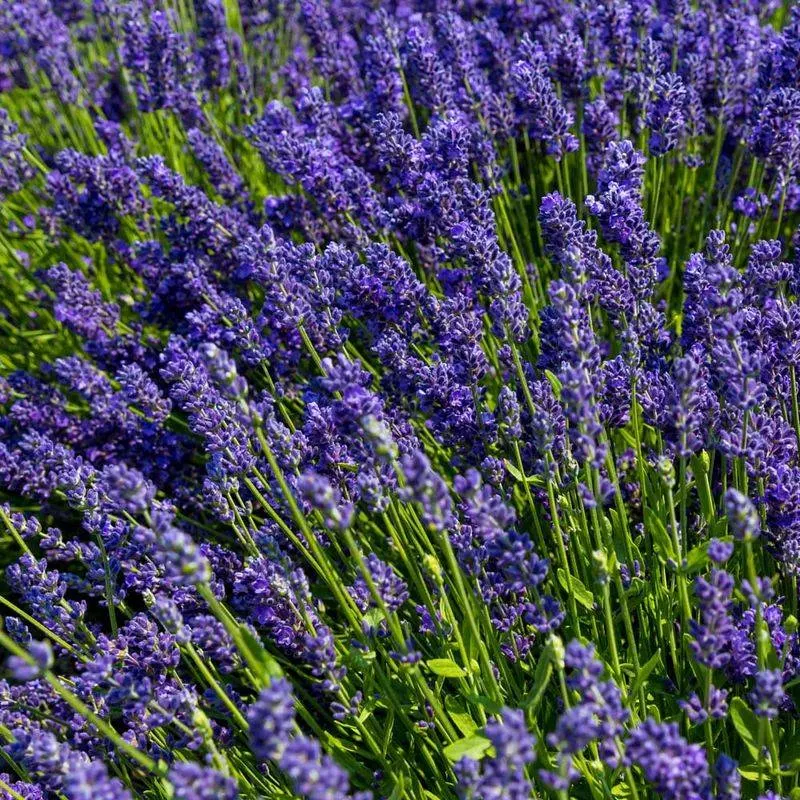
Imagine a garden perfumed with the calming scent of lavender, its purple blooms swaying gently in the breeze. Known for its aromatic properties, it’s perfect for garden borders or as a charming hedge. Lavender thrives in full sun and well-drained soil, making it suitable for sunny spots. Regular pruning encourages dense growth and abundant flowering, while its drought-resistant nature ensures resilience during dry spells. Pair with roses or herbs for a delightful sensory garden. A multifunctional plant, it offers both beauty and practicality, attracting pollinators like bees and butterflies.
Hosta
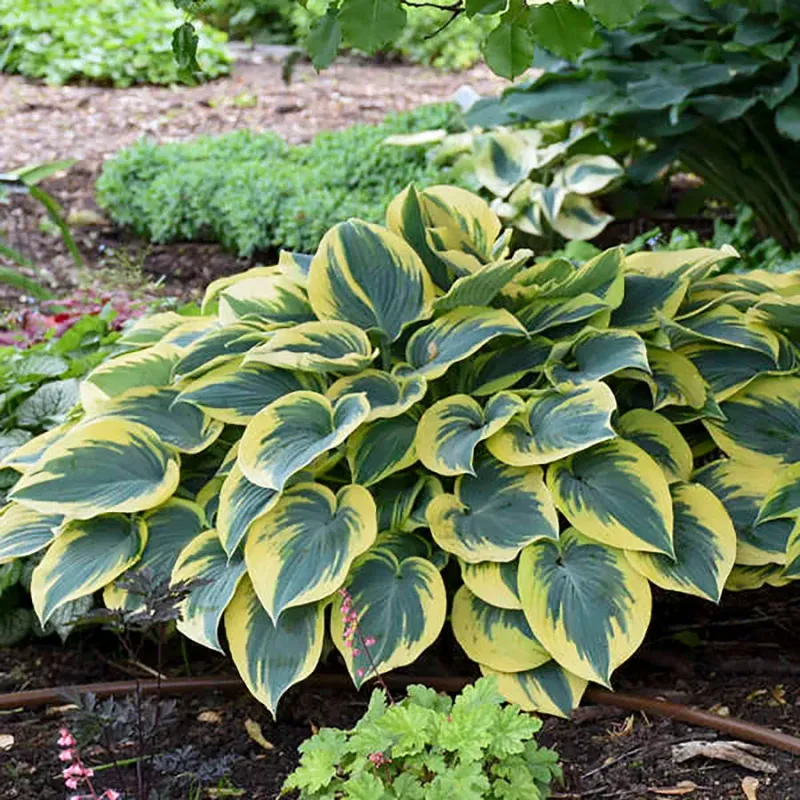
Hostas are a shade gardener’s delight, offering a variety of leaf shapes and colors that brighten any dimly lit area. Their lush, broad foliage creates a verdant backdrop for other shade-loving plants. They require moist, well-drained soil and benefit from regular watering. Despite their delicate appearance, hostas are hardy and can withstand various conditions. Slug resistance can be enhanced through mulching and regular maintenance. Pair with ferns or astilbes for an attractive shade garden. With minimal fuss, hostas bring texture and interest to shaded spots.
Peony
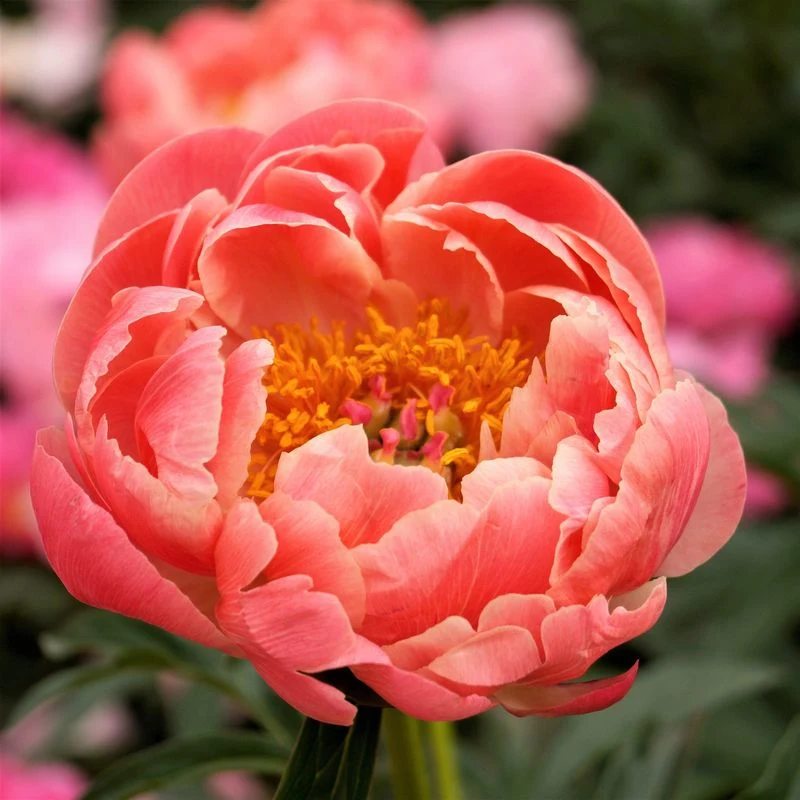
Peonies captivate with their large, fragrant blooms and lush foliage. They bloom in late spring, offering a stunning display of color. Plant them in full sun for optimal flowering. Well-drained soil is essential to prevent root rot. Once established, peonies require little maintenance, rewarding gardeners with blooms that return annually. Cut back the foliage in fall to encourage healthy growth. Their captivating beauty makes them a classic choice for borders or as focal points. Pair with irises or alliums for an extended blooming period. Peonies promise elegance and charm.
Daylily
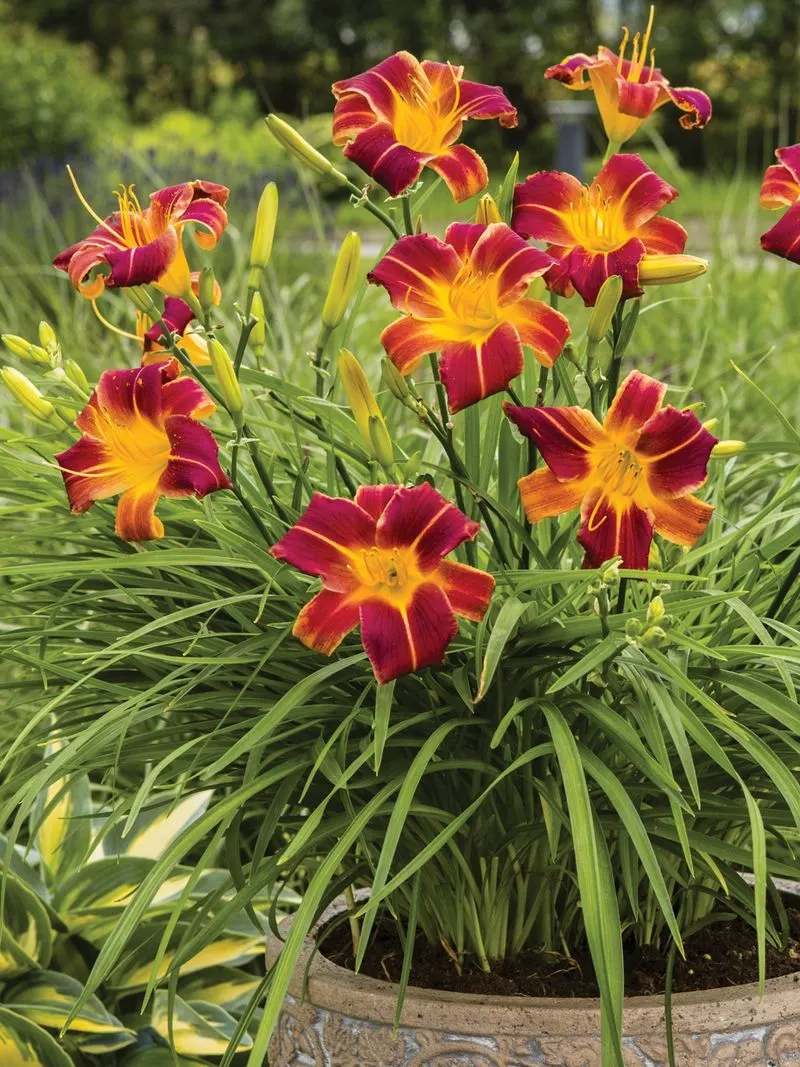
Daylilies offer a burst of color throughout the growing season, with each bloom lasting just a day. These resilient perennials thrive in various conditions, including full sun to partial shade. They prefer well-drained soil and benefit from regular deadheading to encourage further blooming. Planting in groups creates a striking visual impact. With minimal care requirements, they are ideal for novice gardeners. Pair with coneflowers or ornamental grasses for contrasting textures. Daylilies bring dynamic beauty, making them a versatile addition to any garden layout.
Coneflower
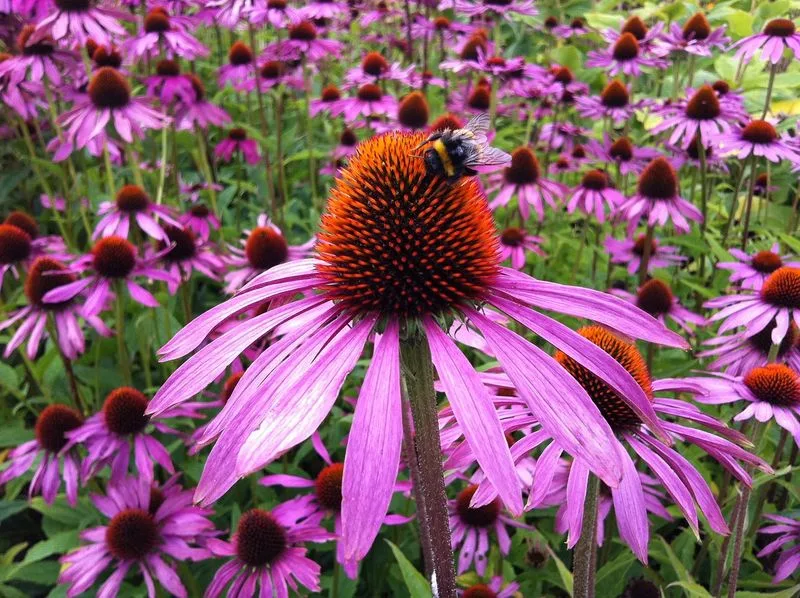
Coneflowers are beloved for their daisy-like appearance and sturdy nature. They thrive in sunny locations with well-drained soil, making them perfect for perennial borders. Known for attracting pollinators, they’re a favorite among gardeners aiming to support local ecosystems. Regular deadheading extends their blooming season, and they pair well with black-eyed Susans or asters for a naturalistic garden setting. Coneflowers are drought-tolerant once established, requiring minimal maintenance. Their vibrant blooms add a splash of color and energy to any garden, and they make excellent cut flowers.
Black-eyed Susan
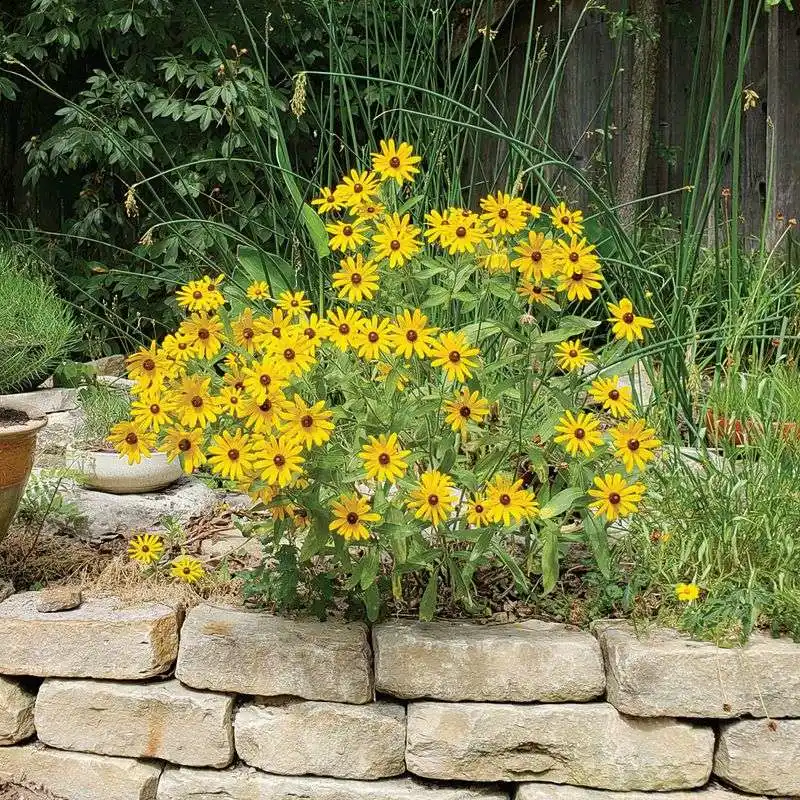
Black-eyed Susans are cheerful perennials known for their bright yellow petals and contrasting dark centers. They thrive in full sun and are tolerant of various soil types, making them incredibly versatile. These plants are low-maintenance, requiring only occasional watering once established. Attracting butterflies and bees, they play a vital role in garden ecosystems. Pair with ornamental grasses or purple coneflowers for a striking color contrast. Their long blooming period ensures a vibrant display throughout summer. Black-eyed Susans bring warmth and life to gardens, enhancing biodiversity.
Sedum
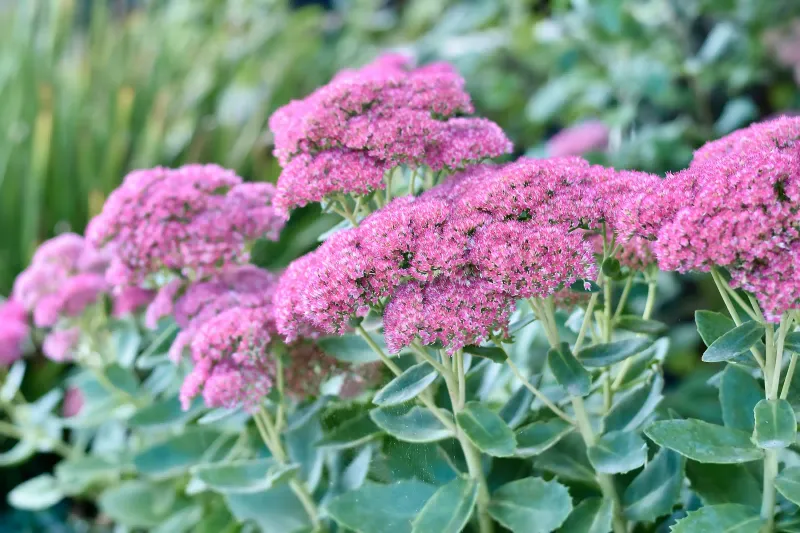
Sedum, often called stonecrop, is a succulent that excels in drought-prone areas and well-drained soil. The plant’s fleshy leaves store water, making it remarkably drought-tolerant and ideal for rock gardens or borders. Its clusters of small, star-shaped flowers attract pollinators, adding ecological value. Sedum requires minimal maintenance, thriving in sunny locations. Pair with other succulents or ornamental grasses for a textured landscape. The plant’s ability to withstand harsh conditions makes it a reliable choice for challenging garden spots, offering year-round interest with its attractive foliage and blooms.
Bee Balm
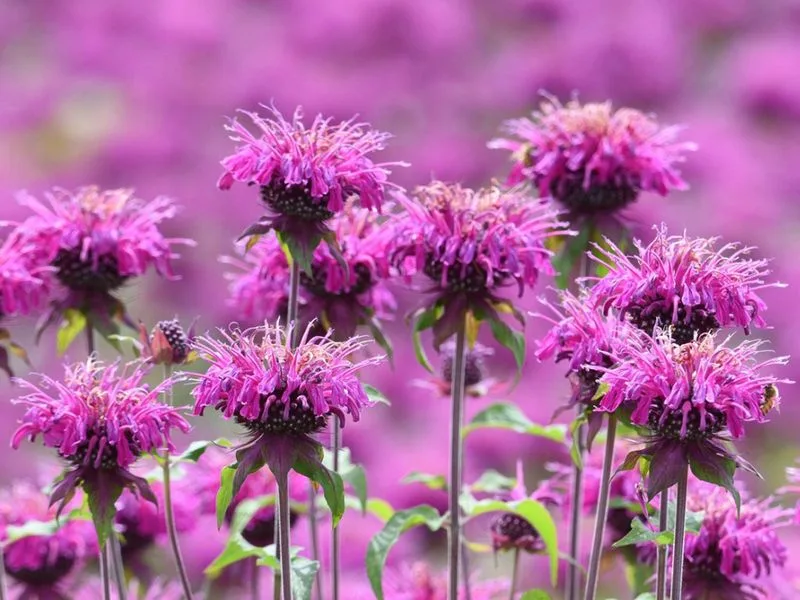
Bee balm is a vibrant addition to any garden, known for its colorful flowers and aromatic leaves. Thriving in full sun to partial shade, it prefers moist, well-drained soil. The plant’s tubular flowers attract hummingbirds and bees, enhancing garden biodiversity. Regular deadheading encourages prolonged blooming, while dividing clumps every few years maintains vigor. Pair with phlox or rudbeckia for a colorful meadow effect. Bee balm’s pleasant fragrance and dynamic appearance make it a favorite among gardeners, offering both aesthetic appeal and ecological benefits. This plant combines beauty and function effortlessly.
Coreopsis
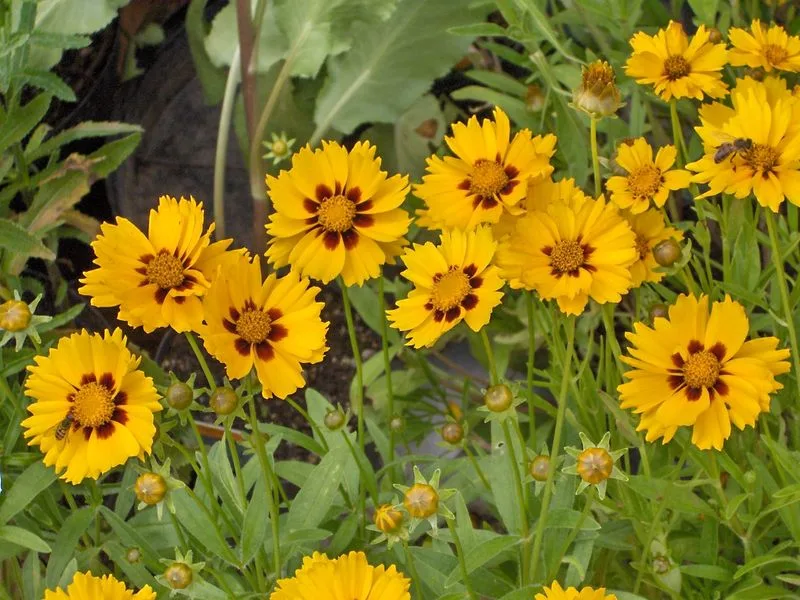
Coreopsis, with its cheerful yellow blooms, brings sunshine to gardens throughout summer. These perennials thrive in full sun and tolerate various soil types, making them adaptable to different garden settings. Regular deadheading promotes continuous flowering, while their drought-tolerant nature ensures survival during dry spells. Coreopsis attracts butterflies, adding to its ecological value. Pair with gaillardia or salvia for a vibrant floral display. Known for their low maintenance, these plants are perfect for busy gardeners. Coreopsis’s bright, sunny disposition is sure to brighten any landscape, providing long-lasting color.
Astilbe
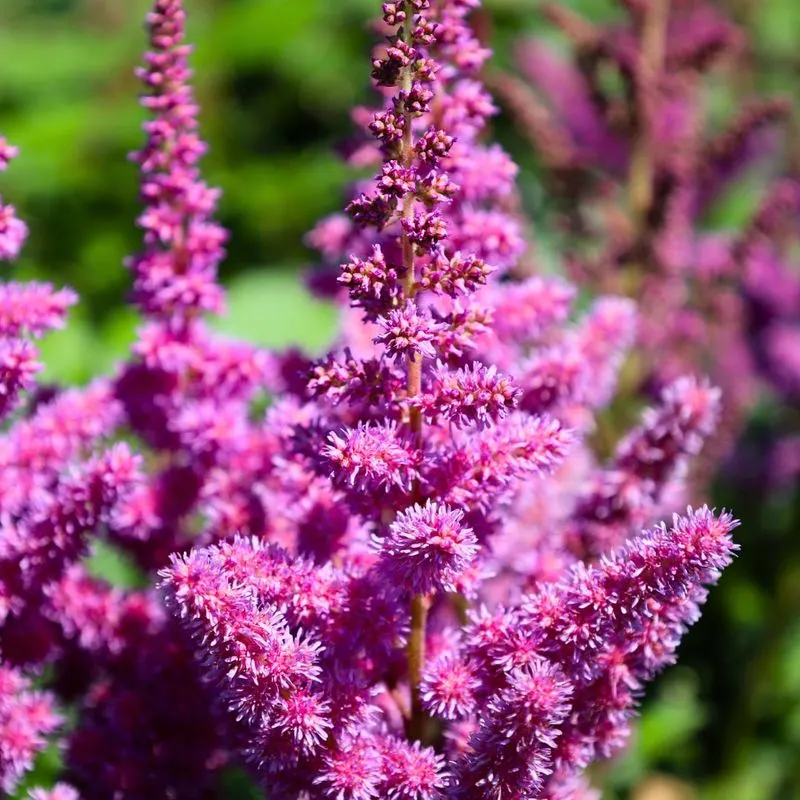
Astilbe offers a touch of elegance with its feathery plumes and rich foliage. Perfect for shaded areas, it thrives in moist, well-drained soil. Its blooms add texture and height to garden compositions, creating a layered effect. Regular watering keeps plants vibrant, while deadheading spent flowers encourages further blooming. Pair with hostas or ferns for an enchanting woodland garden. Astilbe’s graceful appearance and ability to thrive in low light make it a favorite for those seeking to enhance shaded spots with color and form. Its versatility makes it a garden staple.
Shasta Daisy

Shasta daisies are classic perennials that bring a timeless charm to gardens with their white petals and yellow centers. They thrive in full sun, preferring well-drained soil. Regular deadheading extends their blooming season, ensuring a continuous display of flowers. These daisies are drought-tolerant once established, requiring minimal care. Pair with lavender or catmint for a traditional garden look. Known for their reliability and classic beauty, Shasta daisies offer a clean, bright aesthetic that’s easy to maintain. Their simplicity and grace make them a garden favorite, perfect for cutting gardens.
Phlox
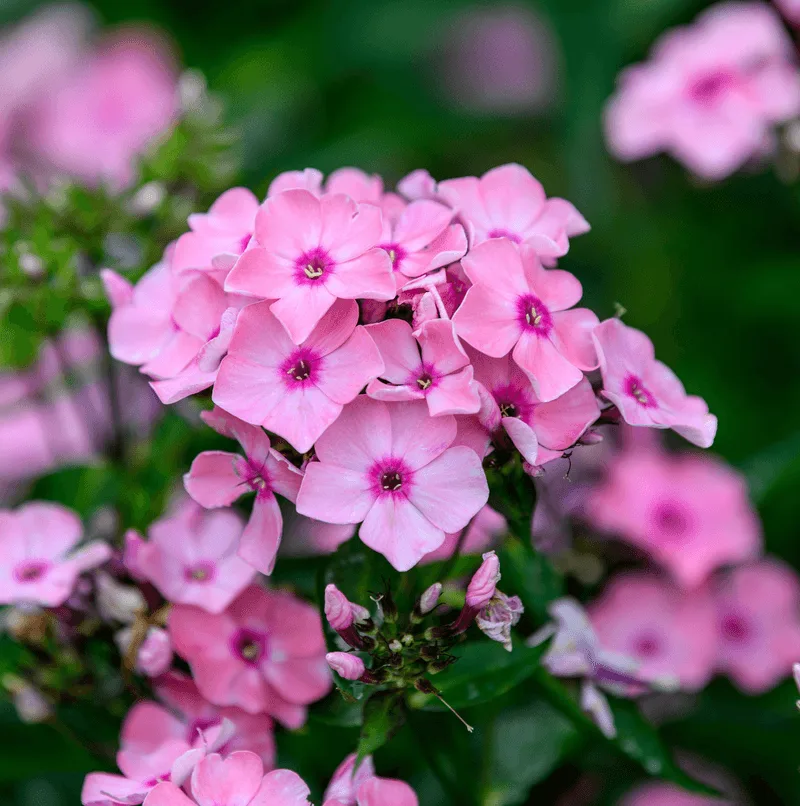
Phlox provides a burst of color with its clusters of vibrant blooms. Ideal for borders or cottage gardens, it thrives in full sun to partial shade. Well-drained, fertile soil ensures healthy growth and abundant flowering. Regular deadheading keeps plants looking tidy and encourages more blooms. Phlox attracts butterflies and hummingbirds, adding life and movement to gardens. Pair with delphiniums or daisies for a classic cottage garden feel. Its ability to spread quickly makes it a great choice for filling gaps in borders. Phlox’s charm and versatility make it a beloved garden staple.
Veronica
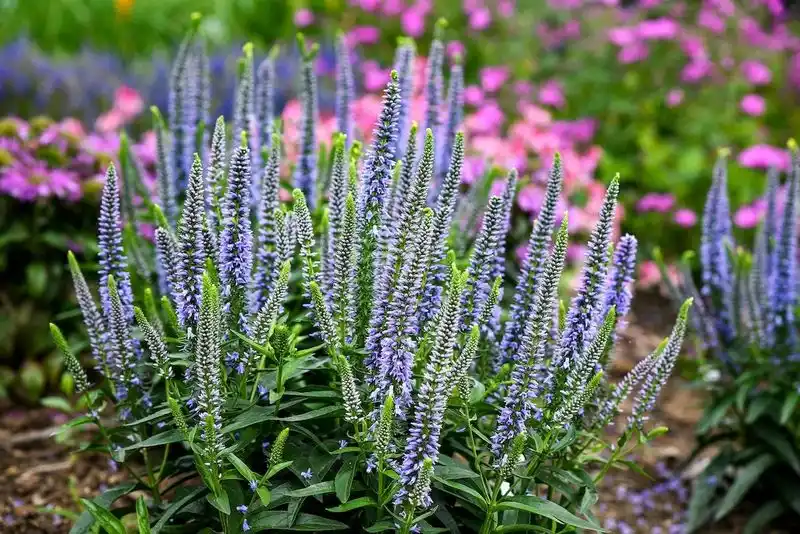
Veronica, also known as speedwell, is prized for its spiky blooms and ease of care. Thriving in full sun, it prefers well-drained soil and regular watering. This plant adds vertical interest to gardens, with its tall flower spikes creating a striking effect. Deadheading encourages prolonged blooming, keeping gardens vibrant throughout the season. Pair with yarrow or coneflowers for a lively contrast. Veronica attracts pollinators, enhancing garden biodiversity. Its graceful presence and low maintenance make it a popular choice for gardeners seeking both beauty and practicality.
Yarrow
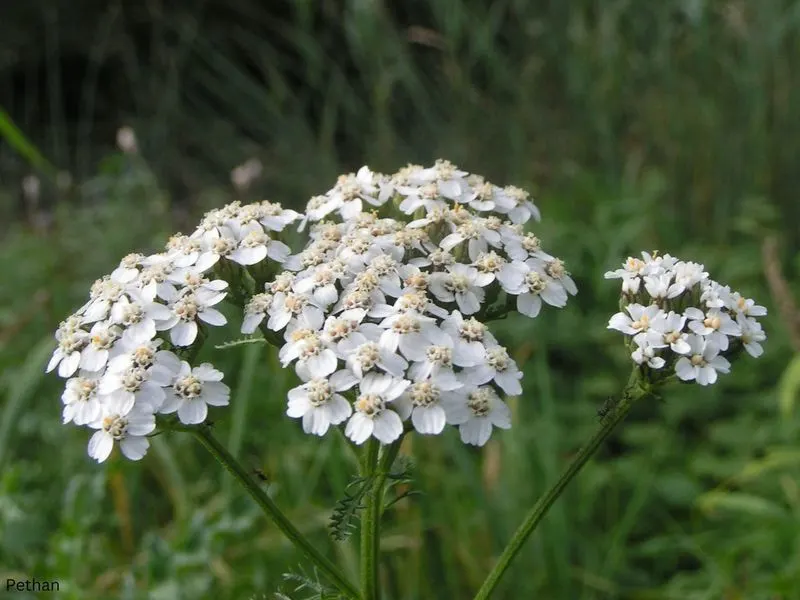
Yarrow is a hardy perennial known for its fern-like foliage and clusters of small, flat blooms. Thriving in full sun, it’s tolerant of poor soil and dry conditions, making it a resilient choice for tough spots. Regular deadheading promotes further flowering, while its aromatic foliage deters pests. Pair with lavender or rudbeckia for a harmonious color scheme. Yarrow attracts butterflies and other beneficial insects, contributing to a healthy garden ecosystem. Its durability and versatility make it a dependable choice for gardeners, offering both beauty and function throughout the growing season.
Ferns
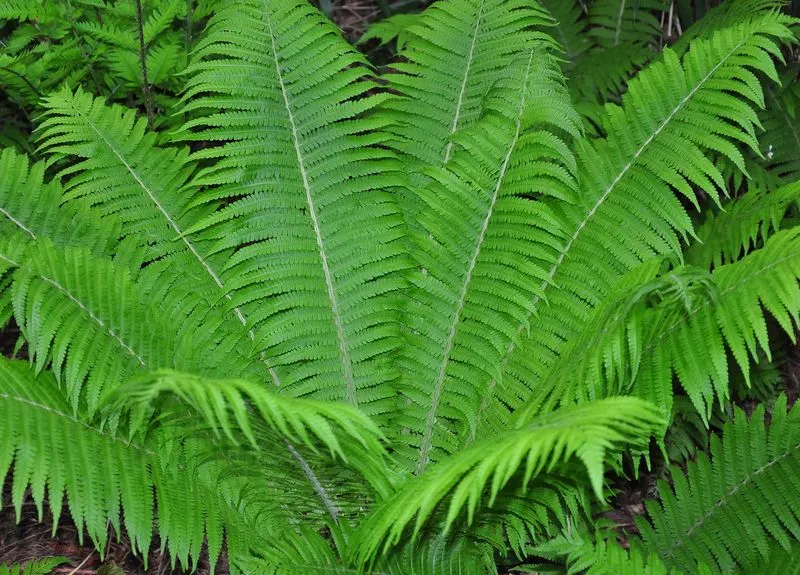
Ferns bring a touch of the wild to gardens with their delicate, feathery fronds. Ideal for shaded areas, they thrive in moist, well-drained soil. Regular watering and mulching keep them healthy and vibrant. Ferns offer a lush, green backdrop for other shade-loving plants, creating a serene garden atmosphere. Pair with hostas or astilbes for a textured, layered effect. Their low-maintenance nature and ability to thrive in low light make them a favorite for gardeners looking to enhance shaded spots with greenery. Ferns’ timeless elegance adds sophistication to garden designs.
Gaillardia
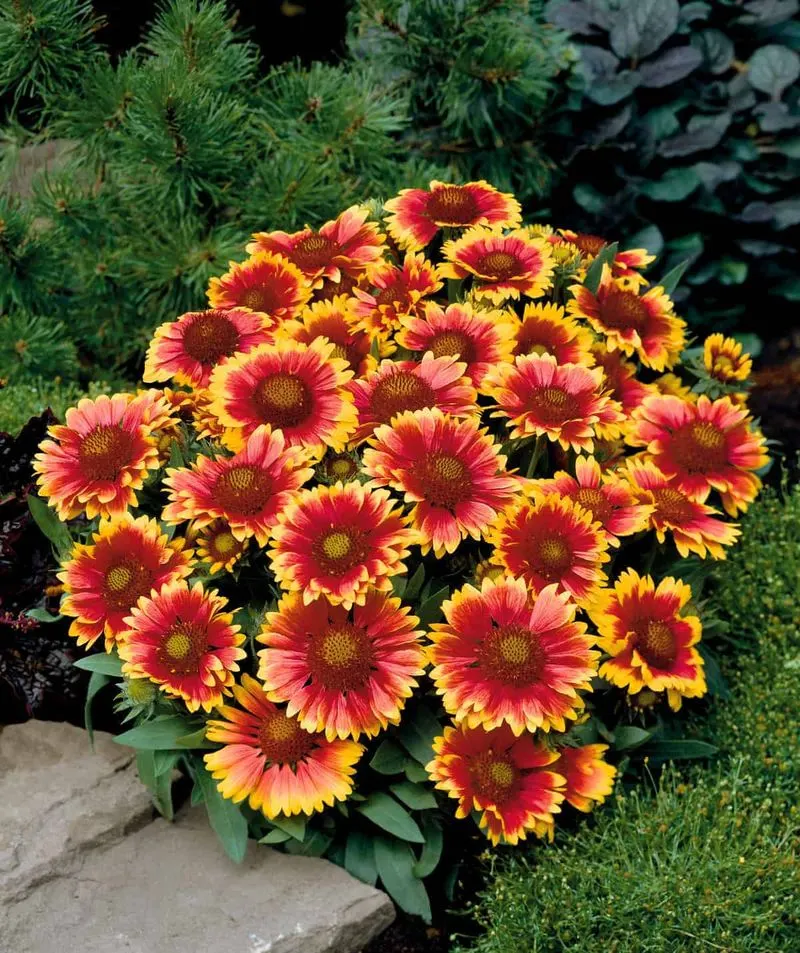
Gaillardia, also known as blanket flower, is celebrated for its vibrant, daisy-like blooms. Thriving in full sun, it prefers well-drained soil and is drought-tolerant once established. Regular deadheading encourages further blooming, extending its colorful display. Pair with coreopsis or echinacea for a lively garden palette. Gaillardia attracts butterflies and bees, enhancing garden biodiversity. Its bright, cheerful blooms add a pop of color to any garden setting, providing visual interest and ecological benefits. This resilient plant’s ability to withstand challenging conditions makes it a reliable choice for sunny gardens.
Russian Sage
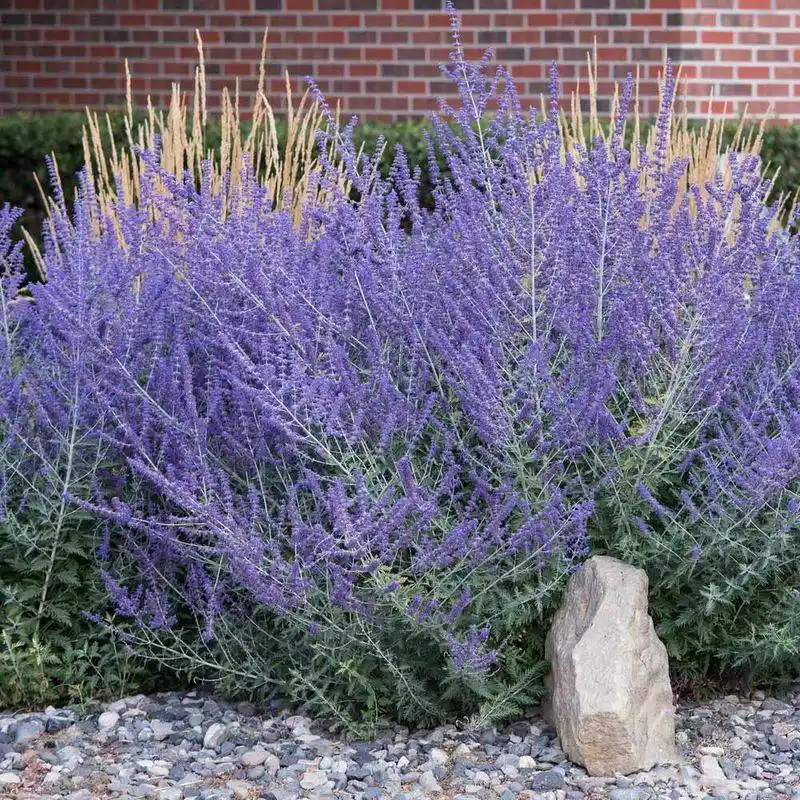
Russian sage brings a touch of elegance with its tall, airy spikes of lavender-blue flowers. Thriving in full sun, it prefers well-drained soil and is drought-tolerant once established. Regular pruning maintains its shape and encourages new growth. Pair with ornamental grasses or coneflowers for a sophisticated garden look. Russian sage attracts pollinators, adding ecological value to gardens. Its silvery foliage provides a striking contrast against vibrant blooms, making it a standout feature in perennial borders. This plant’s beauty and resilience make it a popular choice for gardeners seeking low-maintenance elegance.
Baptisia
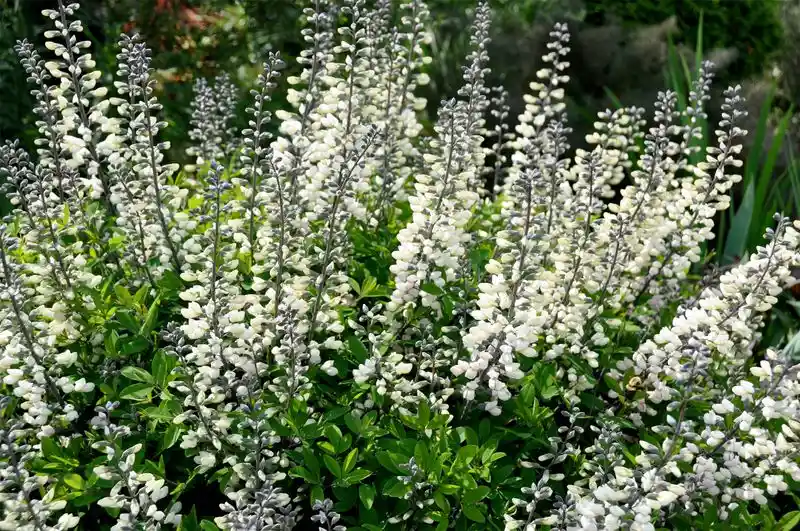
Baptisia, or false indigo, captivates with its spikes of blue flowers and clover-like foliage. Thriving in full sun, it prefers well-drained soil and is drought-tolerant once established. This perennial forms a bushy clump, adding structure to garden designs. Pair with peonies or irises for a harmonious color scheme. Baptisia attracts pollinators and offers years of reliable blooms with minimal care. Its architectural presence adds interest even after flowering, making it a valuable addition to perennial gardens. This plant’s combination of beauty and hardiness ensures its place in any landscape.
Bleeding Heart
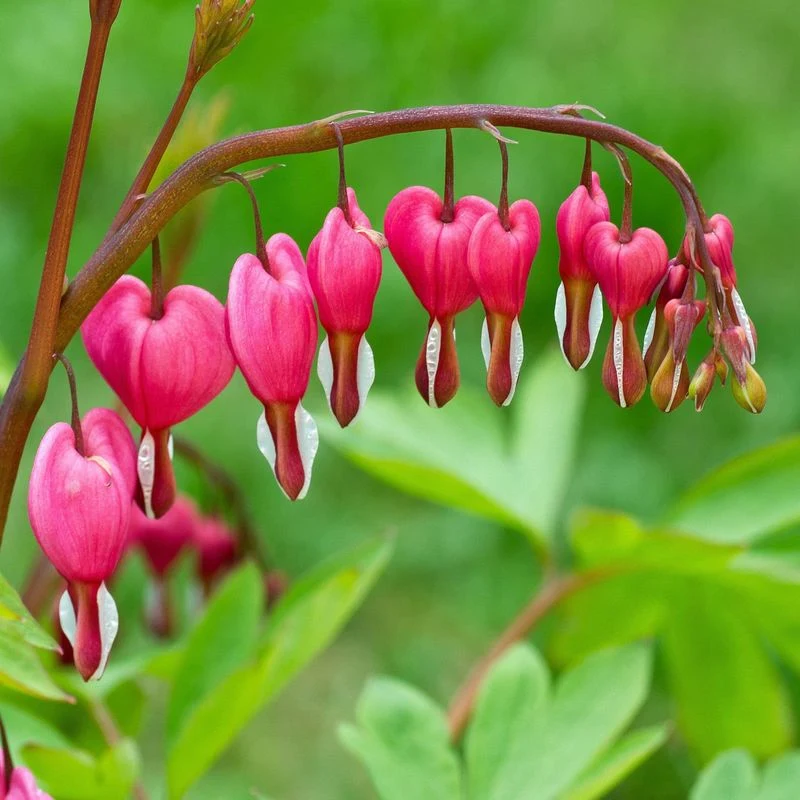
Bleeding heart is cherished for its distinctive heart-shaped flowers and graceful, arching stems. Ideal for shaded areas, it thrives in moist, well-drained soil. Its delicate blooms add a romantic touch to garden designs. Pair with ferns or hostas for a woodland garden feel. Bleeding heart’s beauty lies in its unique form and delicate coloring, creating a focal point in shaded spots. Although it’s a spring bloomer, its foliage remains attractive through summer. This perennial’s charm and elegance make it a timeless addition to any garden, offering both beauty and intrigue.
Columbine
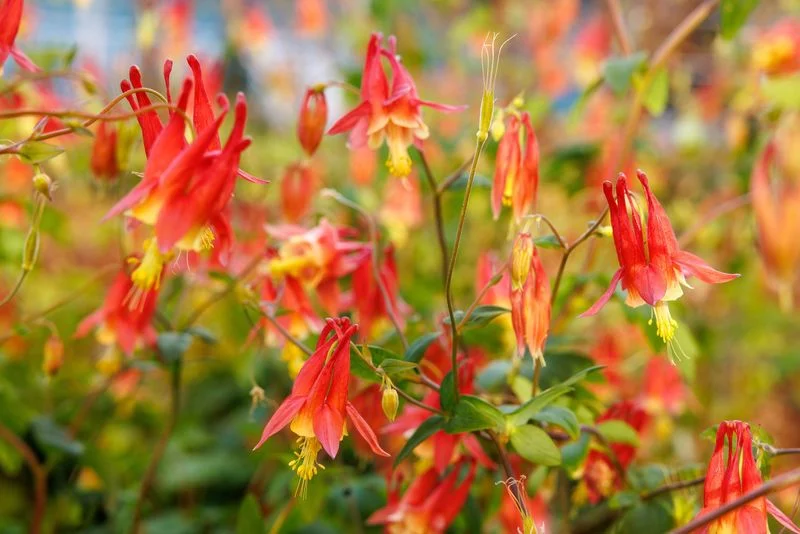
Columbine enchants with its intricate, spurred flowers that come in various colors. Thriving in partial shade, it prefers well-drained soil and adapts to different garden settings. This plant’s unique blooms attract hummingbirds and bees, adding life and movement to gardens. Pair with hostas or astilbes for a woodland garden look. Columbine’s ability to self-seed allows it to naturalize, creating a relaxed garden atmosphere. Its delicate appearance belies its resilience, making it a hardy choice for diverse garden designs. This plant’s unique beauty and adaptability make it a garden favorite.
Lupine
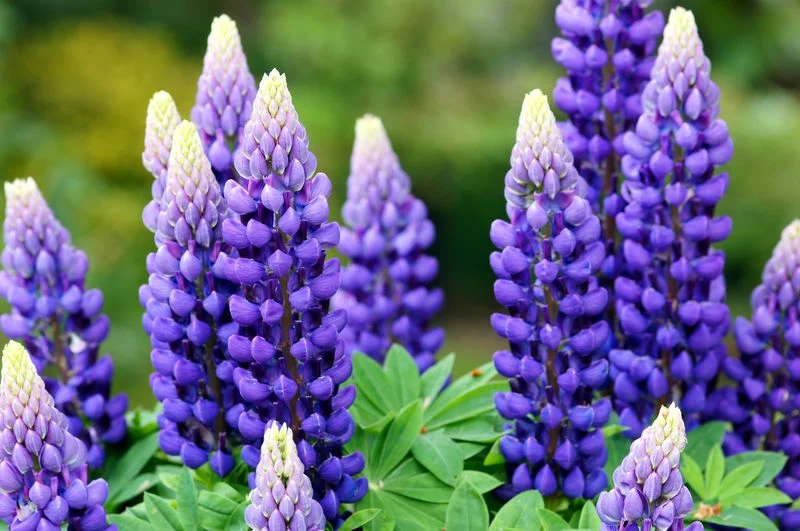
Lupines are prized for their tall, vibrant flower spikes and lush foliage. Thriving in full sun, they prefer acidic, well-drained soil. Regular deadheading encourages prolonged blooming, while their nitrogen-fixing ability benefits the soil. Pair with poppies or daisies for a colorful cottage garden display. Lupines attract pollinators, enhancing garden biodiversity. Their bold, architectural form adds visual interest to borders, creating a dynamic garden composition. This plant’s combination of beauty and ecological benefits ensures it remains a popular choice for gardeners seeking both form and function.
Hellebore
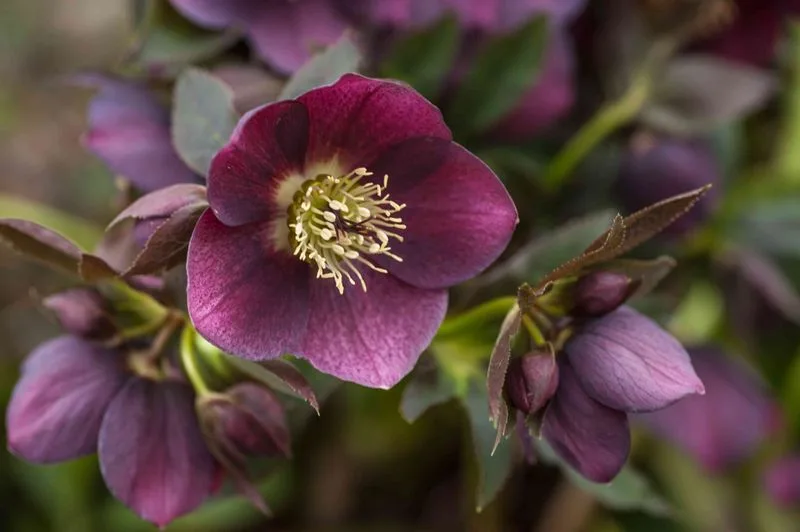
Hellebores, often called Lenten roses, bring early color to gardens with their nodding blooms. Ideal for shaded areas, they thrive in moist, well-drained soil. This perennial’s evergreen foliage adds year-round interest, while its flowers provide a welcome splash of color in late winter to early spring. Pair with ferns or snowdrops for a woodland garden effect. Hellebores are deer-resistant and require minimal maintenance, making them a practical choice for low-maintenance gardens. Their timeless beauty and resilience make them a cherished addition to any garden design.
Rainbow Chard
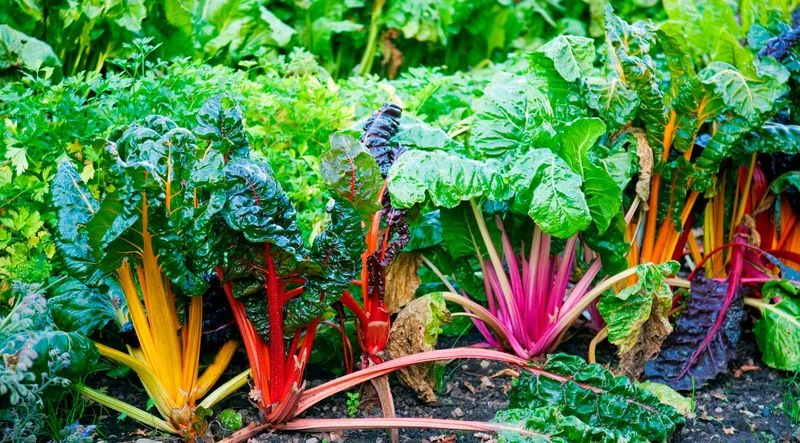
Rainbow Chard isn’t just for vegetable gardens; it’s a striking addition to ornamental borders. Its colorful stalks, ranging from bright yellow to deep red, contrast beautifully with its lush green leaves. Plant it in a sunny spot for best results.
It’s not only visually appealing but also edible, packed with vitamins and minerals. Water regularly and harvest the outer leaves to encourage new growth.
This plant thrives in spring, withstanding various conditions, making it both a practical and beautiful choice. Rainbow Chard can transform any garden into a colorful tapestry.

